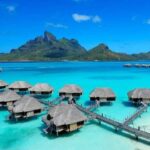The Northern Lights, or Aurora Borealis, are a stunning natural phenomenon that draws travelers from around the globe to witness their vibrant, dancing colors across the night sky. This guide dives into the top ten best destinations to experience this celestial spectacle, perfect for adventure seekers and nature lovers alike. From the remote Arctic landscapes to charming towns steeped in culture, these locations offer prime conditions for aurora viewing, with clear skies, minimal light pollution, and frequent auroral activity. Places like Tromsø in Norway, Reykjavik in Iceland, and Fairbanks in Alaska are renowned for their accessibility and breathtaking scenery, featuring snowy peaks and icy fjords.
Other spots, such as Canada’s Yukon Territory and Sweden’s Kiruna, provide unique adventures like dog sledding or stays in ice hotels, making the aurora chase even more unforgettable. This guide includes practical advice for planning a trip, such as the best months to visit (typically September to March), ideal weather conditions, and local attractions to round out the experience. Crafted to inspire and inform, it aims to attract travelers eager to embark on a magical journey to see the Northern Lights in all their glory.
Top Ten Best Places To See Northern Light
10. Voyageurs National Park, Minnesota, USA
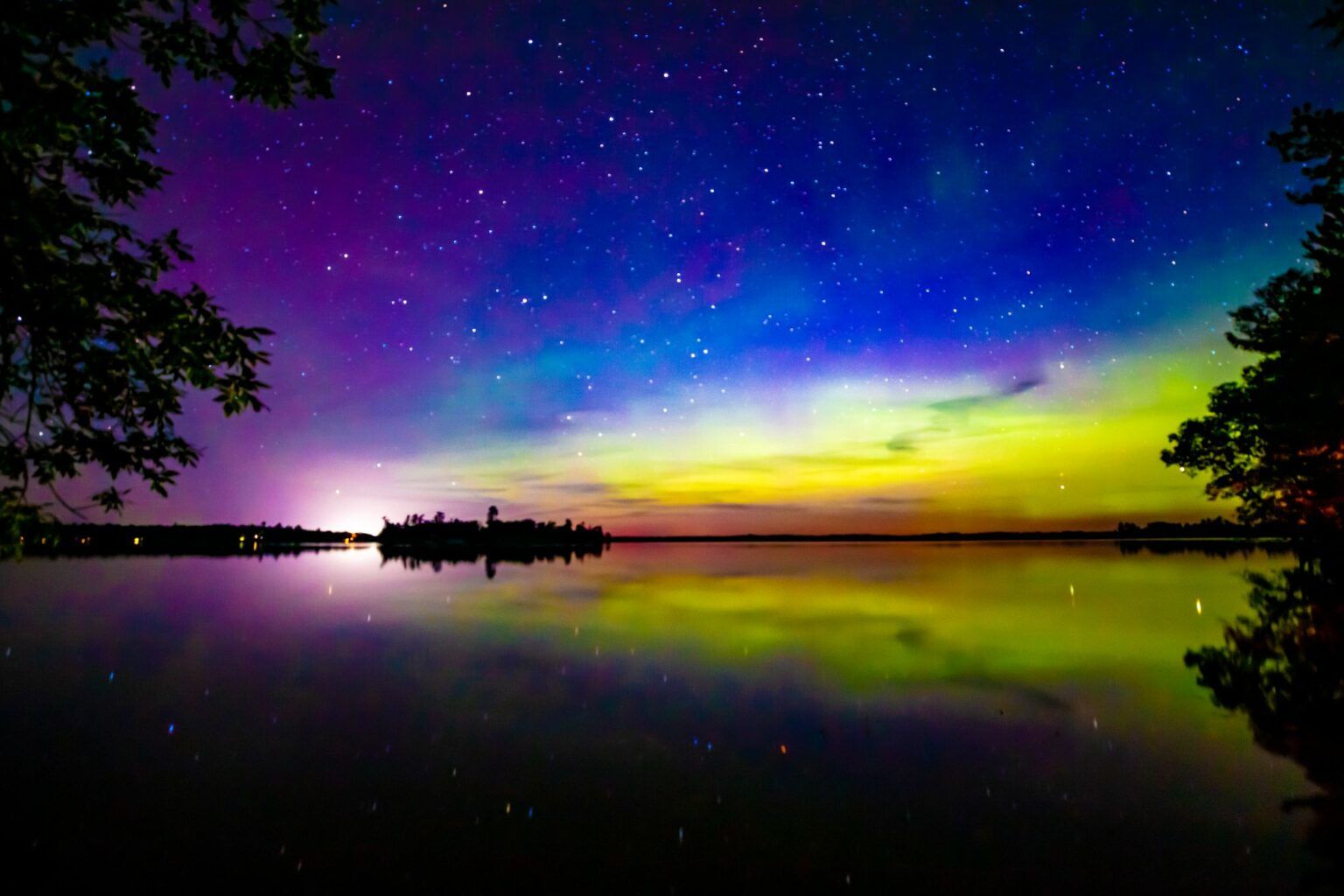
Tucked away in northern Minnesota, Voyageurs National Park is a hidden gem for Northern Lights enthusiasts. Spanning 218,000 acres, this International Dark Sky Park offers some of the darkest skies in the United States, perfect for spotting the aurora’s green and purple hues. Accessible only by boat or snowmobile in winter, the park’s remoteness ensures minimal light pollution, creating ideal conditions year-round, though winter months offer the best chances due to longer nights.
Popular viewing spots like Ash River, Kabetogama Lake, and Rainy Lake Visitor Center provide stunning backdrops of forests and frozen waters. Guided stargazing tours with Voyageurs Outfitters enhance the experience, combining aurora hunting with sightings of the Milky Way. For accommodations, the Cantilever Distillery + Hotel in nearby Ranier offers cozy rooms and a distillery for post-viewing relaxation. Visitors can also camp at one of the park’s many sites, immersing themselves in nature while awaiting the lights. Planning for clear skies and checking aurora forecasts from the University of Alaska can boost success rates. Voyageurs’ blend of seclusion, dark skies, and unique access makes it a standout for aurora seekers in the U.S.
9. Shetland, Scotland
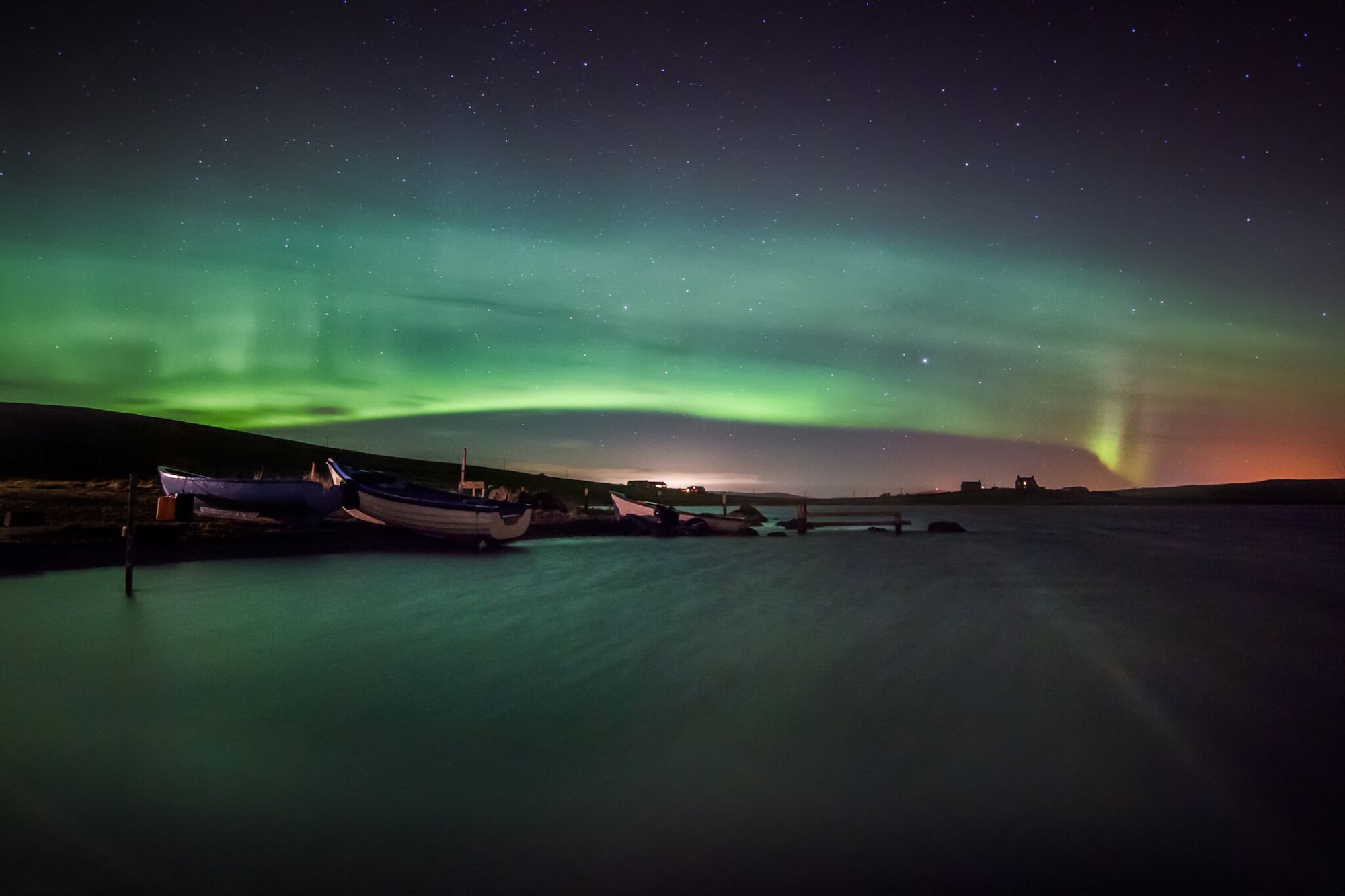
Shetland, a rugged archipelago in Scotland’s far north, is the UK’s premier destination for Northern Lights viewing. Its proximity to the Arctic Circle ensures frequent auroral displays, especially from mid-October to mid-March when nights are longest. To maximize sightings, travelers should head to remote areas away from Lerwick’s streetlights, such as the cliffs of Eshaness or the beaches of St Ninian’s Isle, where dark skies amplify the aurora’s brilliance. Clear, moonless nights are ideal, as full moons can dim the lights’ vibrancy. Shetland’s wild landscapes, with windswept cliffs and rolling hills, add a dramatic backdrop to the experience.
Visitors can explore local culture through Viking heritage sites or cozy up in traditional croft houses. Guided aurora tours are available, offering expert insights and photography tips. Checking local weather and aurora alerts via apps like Aurora Notifier enhances planning. Shetland’s accessibility from mainland Scotland, combined with its unspoiled beauty and frequent auroral activity, makes it a compelling choice for those seeking a European aurora adventure without venturing too far north.
8. Finnish Lapland, Finland

Finnish Lapland, nestled above the Arctic Circle, is a magical destination for Northern Lights viewing, with the aurora visible up to 200 nights a year. From late August to April, the region’s dark, clear skies and vast wilderness create perfect conditions for spotting the lights. Kakslauttanen Arctic Resort is a highlight, offering glass igloos where guests can watch the aurora from the comfort of their beds. Other accommodations, like Torassieppi Eco Reindeer Resort, feature cabins with glass roofs, blending coziness with unobstructed views. Beyond aurora chasing, Finnish Lapland offers winter activities like reindeer sleigh rides, husky safaris, and cross-country skiing, immersing visitors in the Arctic’s charm.
The region’s remote villages, such as Levi or Saariselkä, provide easy access to prime viewing spots with minimal light pollution. For the best experience, plan a multi-night stay to account for weather changes and check aurora forecasts from the Finnish Meteorological Institute. Finnish Lapland’s combination of unique accommodations, frequent auroral displays, and enchanting winter landscapes makes it a top pick for a bucket-list aurora adventure.
7. Churchill, Canada
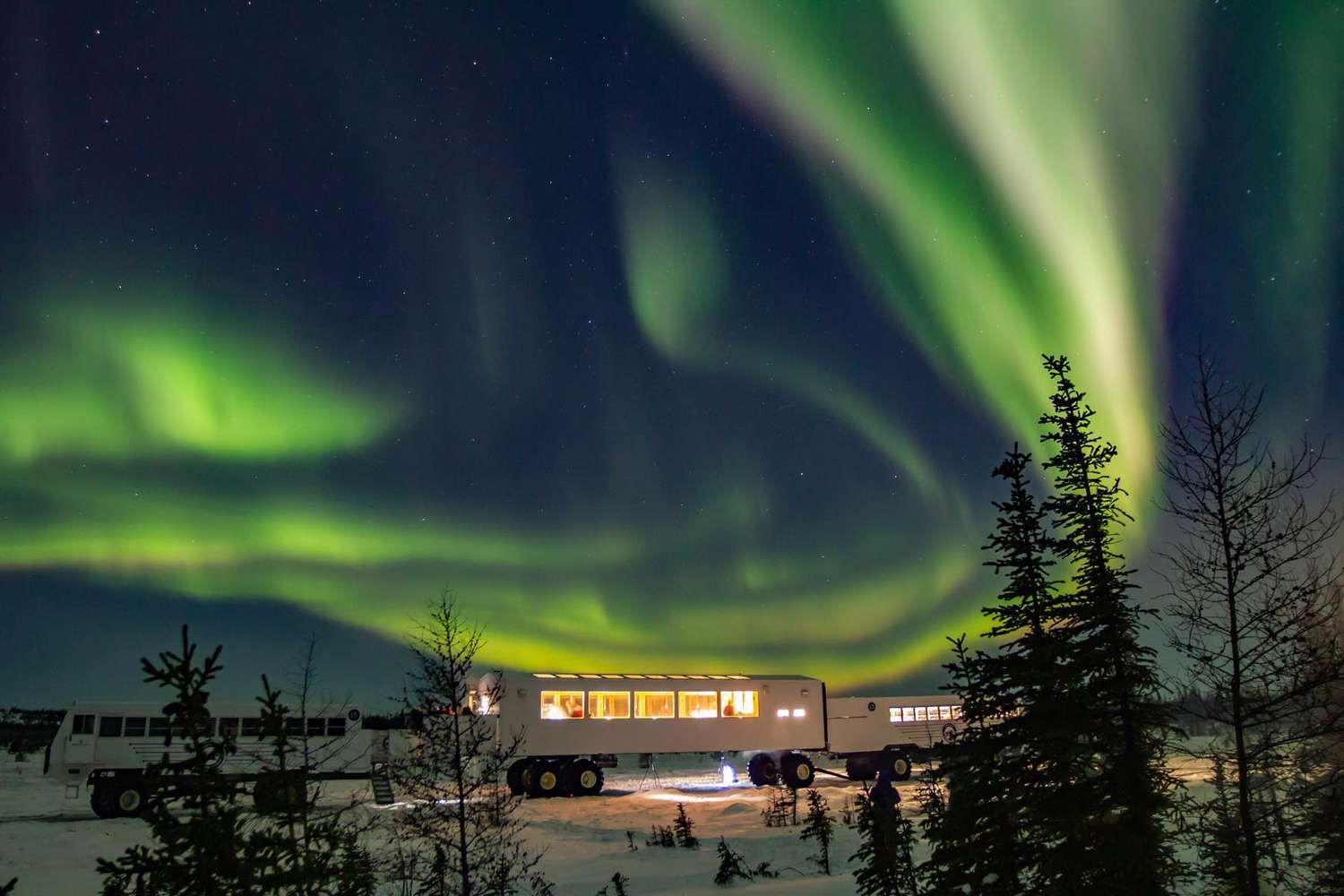
Churchill, on the shores of Hudson Bay in Manitoba, Canada, is a unique Northern Lights destination where the aurora meets Arctic wildlife. With over 300 nights of auroral activity annually, this remote town offers excellent viewing opportunities from late August to mid-April. What sets Churchill apart is the chance to combine aurora watching with polar bear sightings, especially in fall and winter. The Tundra Lodge, a seasonal rolling camp, provides a front-row seat to both the lights and roaming bears, while the Tundra Train’s sleeper cars offer a cozy vantage point for night sky gazing.
The Churchill Northern Studies Centre runs multiday tours blending aurora viewing with educational talks on Arctic ecology, adding depth to the experience. For optimal sightings, head to open areas like the shores of Hudson Bay, avoiding town lights. Clear, cold nights are best, and aurora apps can help track activity. Churchill’s remote setting requires planning, with access via flights from Winnipeg or train journeys. Its blend of frequent auroras, wildlife encounters, and immersive tours makes it an unforgettable destination for nature enthusiasts.
6. Yellowknife, Canada
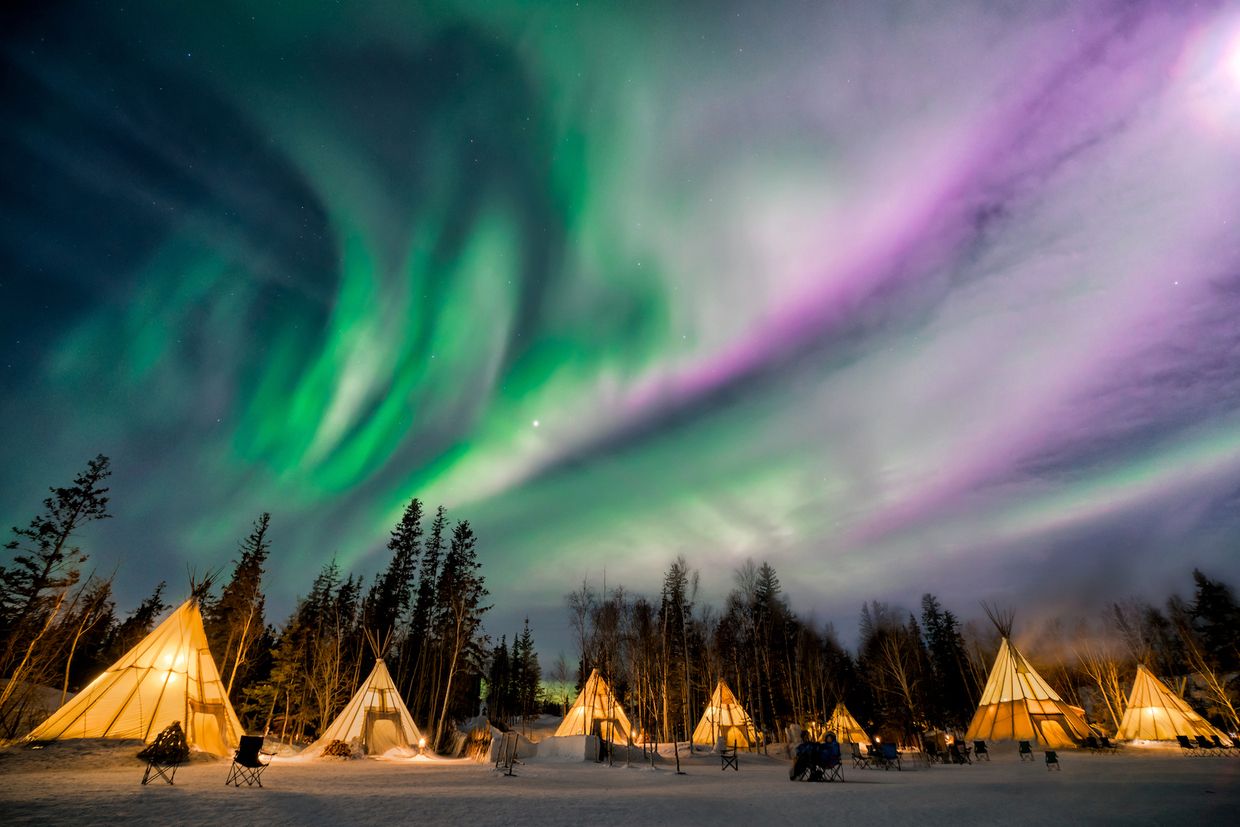
Yellowknife, the capital of Canada’s Northwest Territories, earns its title as the “Aurora Capital of the World” with up to 240 days of auroral activity annually. Located directly under the auroral oval, this vibrant city offers prime viewing from mid-November to early April, when long, dark nights enhance visibility. Aurora Village, just outside the city, provides guided tours with heated viewing tents, hot drinks, and activities like dog sledding or snowshoeing, creating a comfortable yet adventurous experience. Yellowknife’s clear skies and minimal light pollution make it ideal for spotting the lights’ vibrant greens and reds.
The Snowkings’ Winter Festival in March adds a festive touch, with ice sculptures and live music complementing aurora hunts. Visitors can explore the city’s cultural attractions, like the Prince of Wales Northern Heritage Centre, during the day. For the best chances, plan a multi-night stay and check aurora forecasts from the Canadian Space Agency. Yellowknife’s accessibility, frequent displays, and diverse activities make it a top choice for travelers seeking a reliable and immersive Northern Lights experience.
5. Kiruna, Sweden
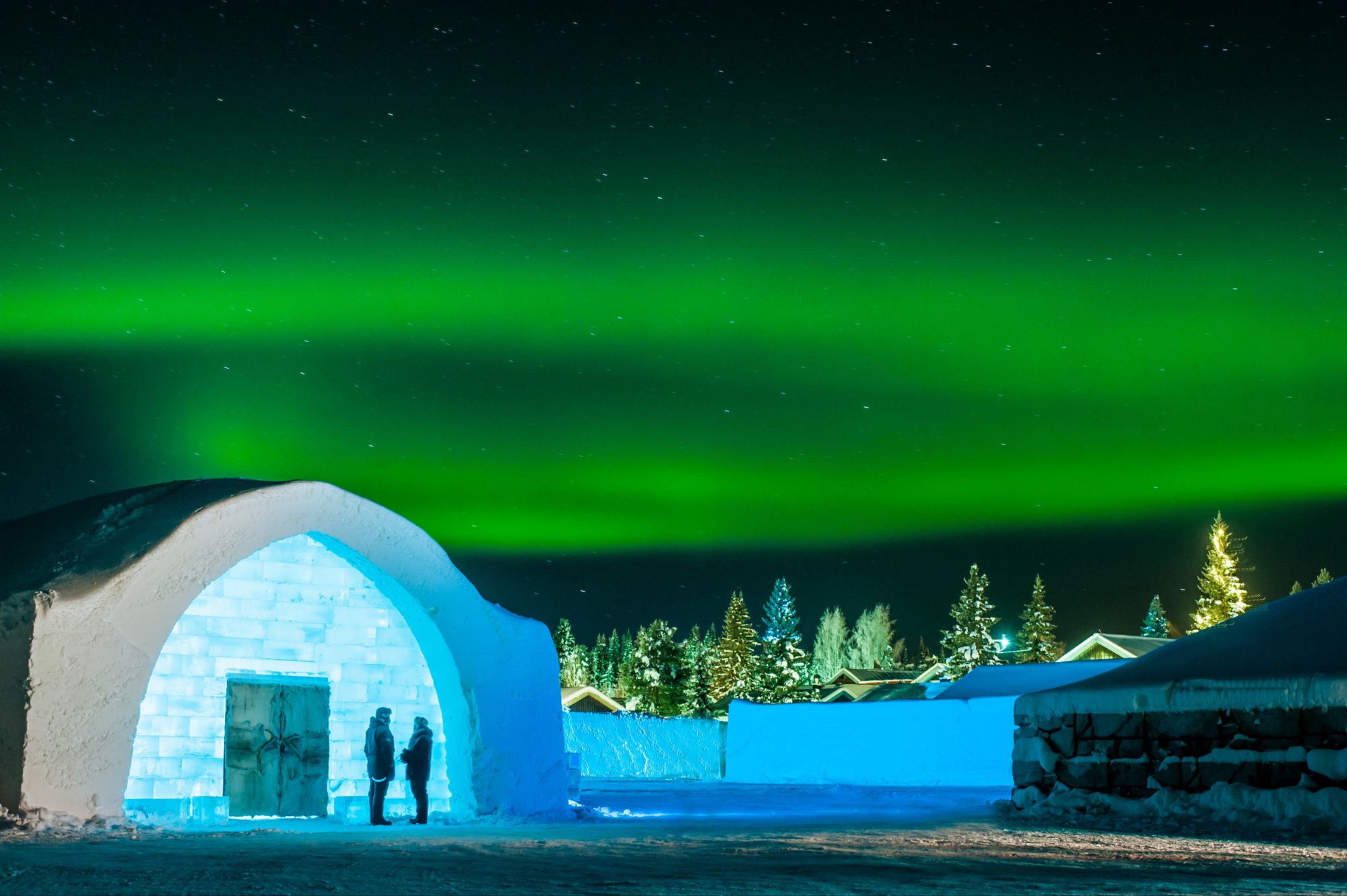
Kiruna, in Swedish Lapland, is a gem for Northern Lights seekers, offering frequent displays in a serene, less crowded setting. Situated under the auroral oval, this town of 18,000 sees the lights from October to March, with clear skies often extending the season. The nearby ICEHOTEL in Jukkasjärvi, rebuilt annually from snow and ice, provides a magical setting, with ice rooms or warm cabins for aurora viewing. Kiruna’s lack of light pollution and open landscapes ensure unobstructed views, while activities like husky sledding, ice fishing, or Sami cultural tours add depth to the trip.
The town’s Arctic environment, with snow-covered forests and frozen lakes, creates a stunning backdrop for the aurora’s dance. Direct flights from the UK to Luleå, followed by a short train ride, make Kiruna accessible. For the best experience, book a guided aurora tour with local experts and check forecasts from the Swedish Institute of Space Physics. Kiruna’s blend of unique accommodations, frequent auroras, and cultural richness makes it a standout destination for an authentic Arctic adventure.
4. Abisko National Park, Sweden
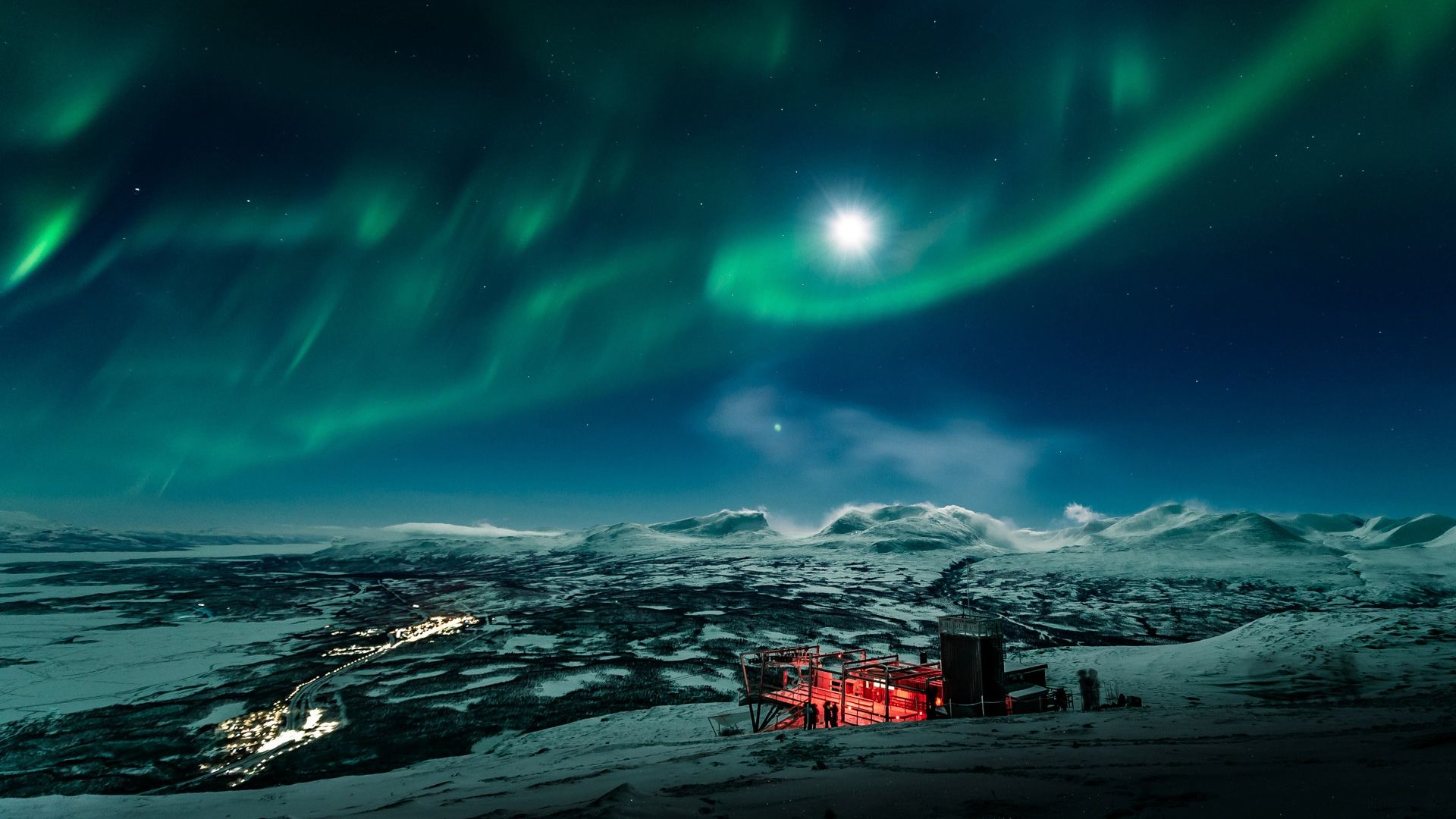
Abisko National Park in Swedish Lapland is often called the world’s best place to see the Northern Lights, thanks to its unique “Blue Hole” microclimate. This phenomenon, caused by Torneträsk Lake, creates consistently clear skies, ideal for aurora viewing from September to March. The Aurora Sky Station, perched atop Mount Nuolja and accessible by chairlift, offers unobstructed views and guided tours, complete with Swedish fika or gourmet dinners. The park’s location within the auroral oval ensures frequent displays, with lights appearing as curtains, arcs, or spirals against snow-draped peaks.
Visitors can stay in cozy cabins or the STF Abisko Turiststation, blending comfort with wilderness. Activities like snowshoeing or cross-country skiing enhance the Arctic experience. For optimal sightings, check aurora forecasts from the Swedish Institute of Space Physics and plan for multiple nights to account for weather variability. Abisko’s pristine environment, clear skies, and dedicated aurora infrastructure make it a top choice for travelers seeking a reliable and breathtaking Northern Lights experience.
3. Fairbanks, Alaska, USA
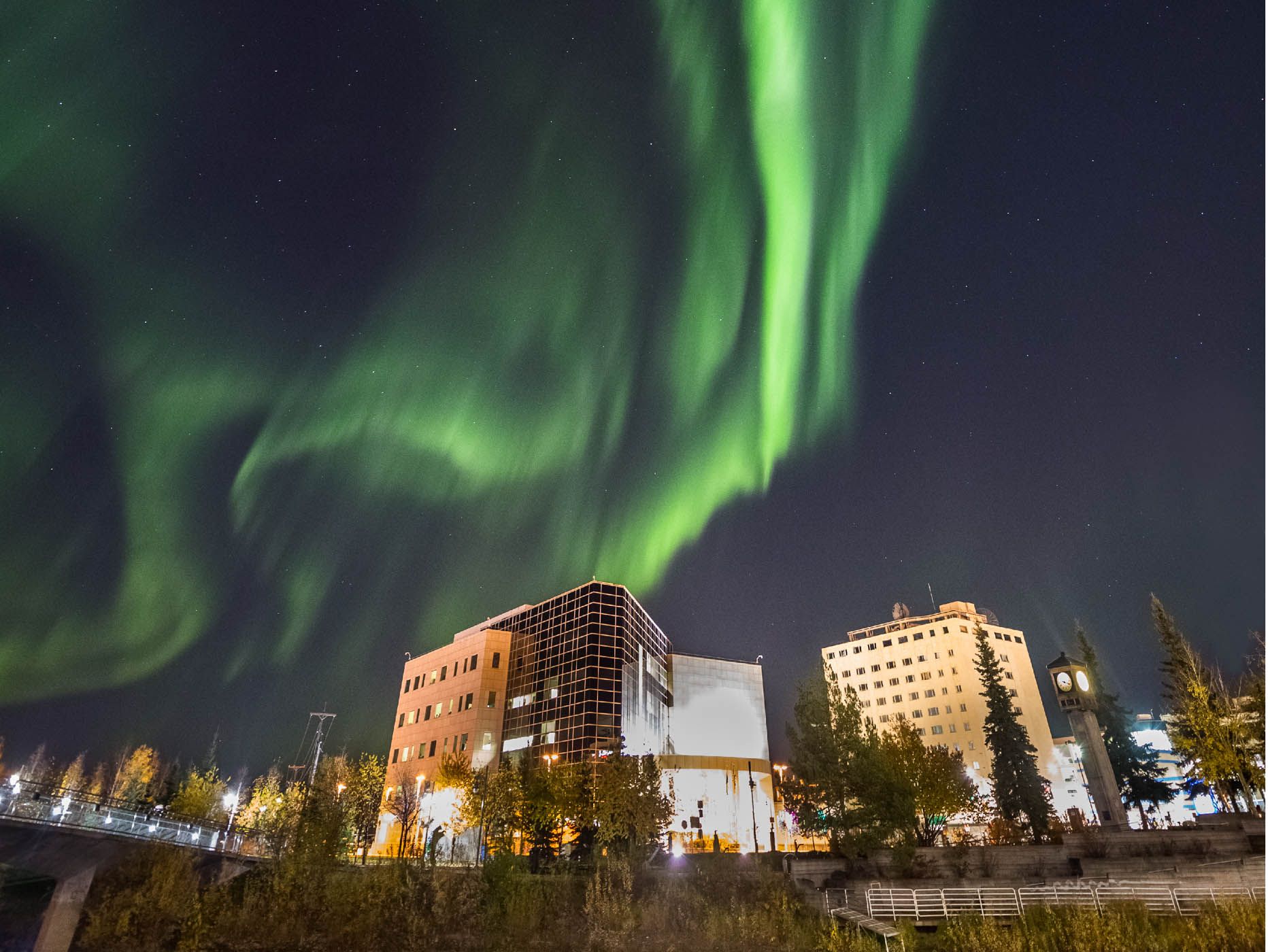
Fairbanks, Alaska, is a premier Northern Lights destination, sitting directly under the Aurora Oval for frequent and vivid displays. From late August to April, the city offers excellent viewing opportunities, with peak chances between 10 p.m. and 3 a.m. Chena Hot Springs Resort, an hour’s drive away, lets guests soak in natural hot tubs while watching the aurora, with wake-up calls for sightings. The University of Alaska’s aurora forecasts help plan visits, recommending at least three nights for an 80% chance of success.
Fairbanks’ clear, cold winters and minimal light pollution enhance visibility, while its accessibility via direct flights makes it convenient. Daytime activities include dog sledding, ice fishing, or visiting the Museum of the North. For the best experience, head to rural spots like Cleary Summit, avoiding city lights. Fairbanks’ blend of reliable auroras, unique accommodations, and Arctic adventures makes it a top pick for travelers chasing the Northern Lights in North America.
2. Reykjavik, Iceland
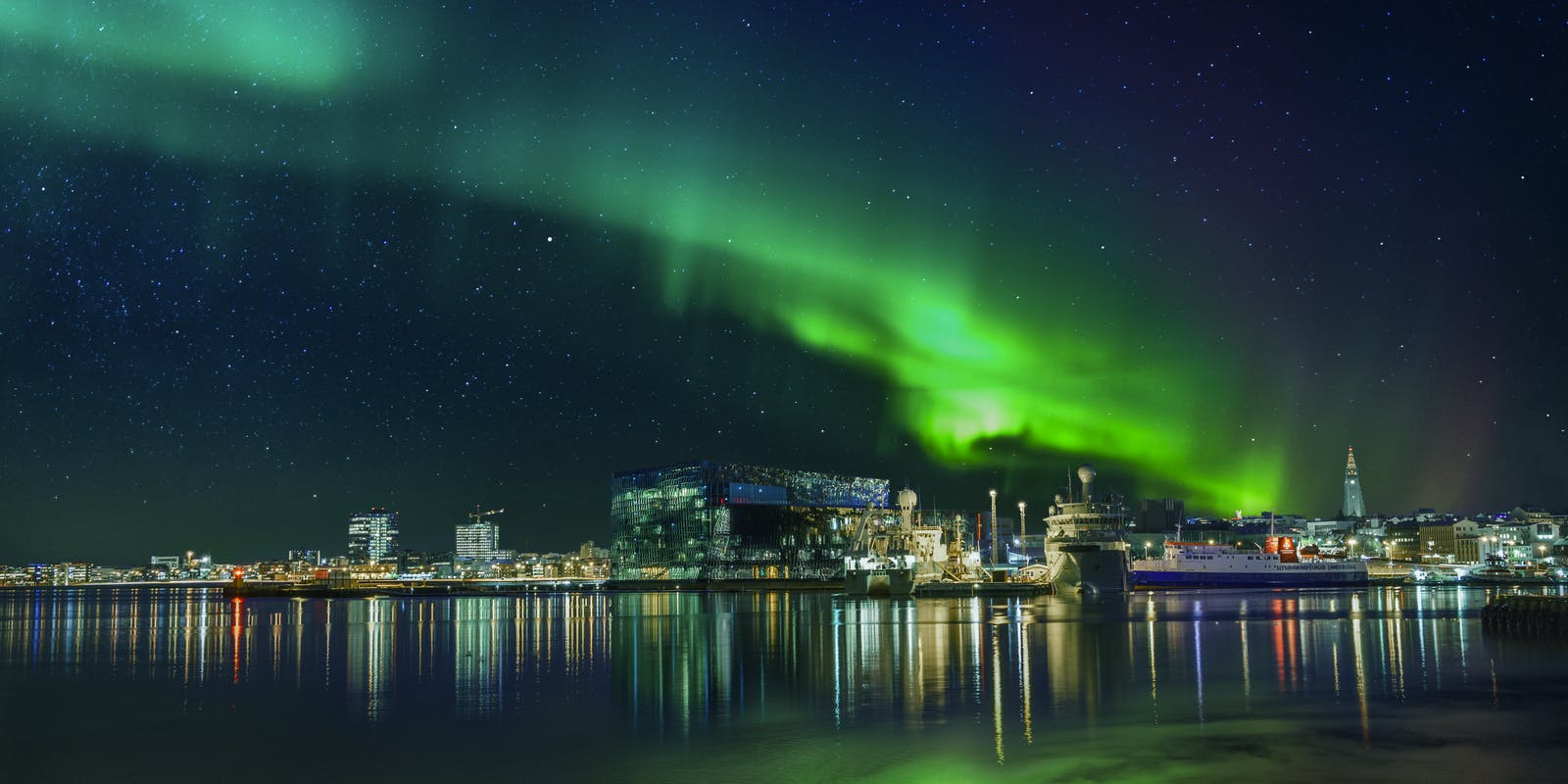
Reykjavik, Iceland’s capital, is a gateway to the Northern Lights, offering a blend of urban accessibility and proximity to prime viewing spots. From September to April, the aurora is visible, though light pollution in the city can dim sightings. For the best views, venture to nearby areas like Thingvellir National Park or the Golden Circle, where dark skies and dramatic landscapes think geysers and waterfalls create a stunning backdrop. Guided tours from Reykjavik or Akureyri, further north, maximize chances with expert-led hunts.
Icelandair’s stopover packages make it easy to add aurora viewing to transatlantic trips. A week-long stay is ideal to navigate Iceland’s unpredictable weather, with clear nights offering the best odds. Apps like the Icelandic Meteorological Office’s aurora forecast aid planning. Reykjavik’s vibrant culture, with geothermal pools and cozy cafes, complements the aurora chase, making it a versatile destination for travelers seeking both adventure and comfort under the Arctic sky.
1. Tromso, Norway
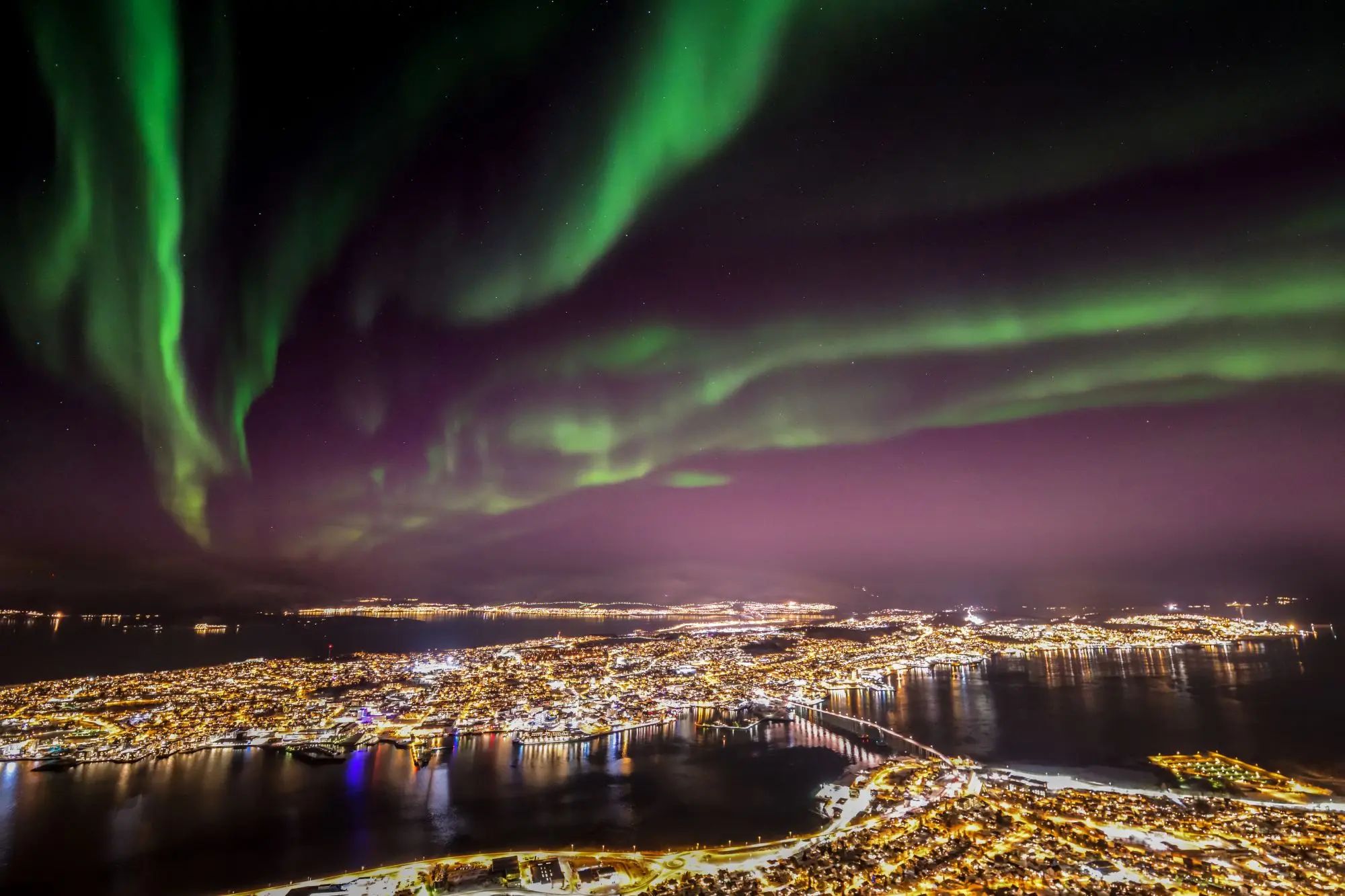
Tromso, nestled in Norway’s Arctic heart, is a top-tier destination for Northern Lights viewing, sitting directly under the auroral zone. From September to April, the city offers frequent, vivid displays, with clear skies amplifying the aurora’s greens, purples, and reds. Its accessibility 3.5 hours by direct flight from London makes it a favorite for European travelers. Tromso’s vibrant scene, with more pubs per capita than anywhere in Norway, adds warmth to cold nights of aurora hunting.
Astronomy-themed cruises with Hurtigruten offer a “Northern Lights Promise,” ensuring a free trip if the aurora doesn’t appear. The Science Centre of Northern Norway and its planetarium deepen the experience with educational insights. For optimal views, head to nearby islands or fjords to escape city lights. Guided tours, including photography workshops, enhance sightings, while aurora apps like NorwayLights provide real-time forecasts. Tromso’s blend of accessibility, frequent auroras, and lively culture makes it the ultimate destination for an unforgettable Northern Lights adventure.



